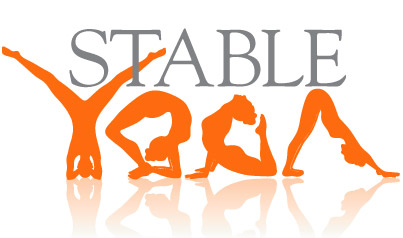
Yoga is an activity that can make use of a dizzying array of items of gear but, unless you’re a yoga kit junkie, there are lots of household items you can make use of instead. If you come and practise at Stable Yoga, we have all the necessary kit here for students to borrow. If you’re joining a live-streamed class at home and/or want to bring your own equipment to class, here is a list of the most useful items to have available when you practise:
- Sticky/Yoga mat. These come in differing thicknesses, lengths and widths - make sure it easily accommodates your full height lying down - but key is the word ‘sticky’. Don’t be tempted to use/buy a Pilates or general exercise mat, which are usually too slippery, especially once you get hot and sweaty…
This is the one item there is no real alternative for, as most types of towel, fabric or rattan mat is not going to provide enough grip for your hands and feet. - Blocks. There are two principal kinds: flat, foam rubber blocks (8” x 12” x 2” deep) and cork-covered or EVA foam bricks (nearly 5” x 9” x 3” high).
Blocks can easily be replaced by hardbacked books of varying sizes that you can stack to different heights. - Belt/strap. 2” wide, usually made of thick cotton and at least 8 foot long, with a double D-ring style buckle so you can create a loop in the strap.
A long belt, any kind of tie/scarf, or just a long-ish towel can take the place of a belt or strap. - Blanket. For padding when kneeling, staying cosy when seated or lying in relaxation, or making neck rolls, etc. Any soft fabric that folds easily will do.
- Bolster. Typically 2 foot long (about the length of spine from pelvis to nape) and 9 inches in diameter, bolsters vary a lot in weight/density, from lighter, 100% cotton styles to heavier, buckwheat-filled, more solid ones. Like the mattress on your bed, people’s preferences vary hugely.
Try experimenting with sofa cushions folded in half, or a line of stacked books with a folded blanket on top for padding. - Eye bag. For relaxation if you prefer to keep the distraction of a bright room to a minimum. You could just cover your eyes with a piece of clothing, but the weight of an eye bag is especially soothing.
If making your own, fill a 10cm x 20cm soft cotton pouch with small, uncooked grains weighing approx. 150g-250g (5.5-8.5oz), depending on personal preference, and perhaps adding a handful of lavender to aid relaxation?

